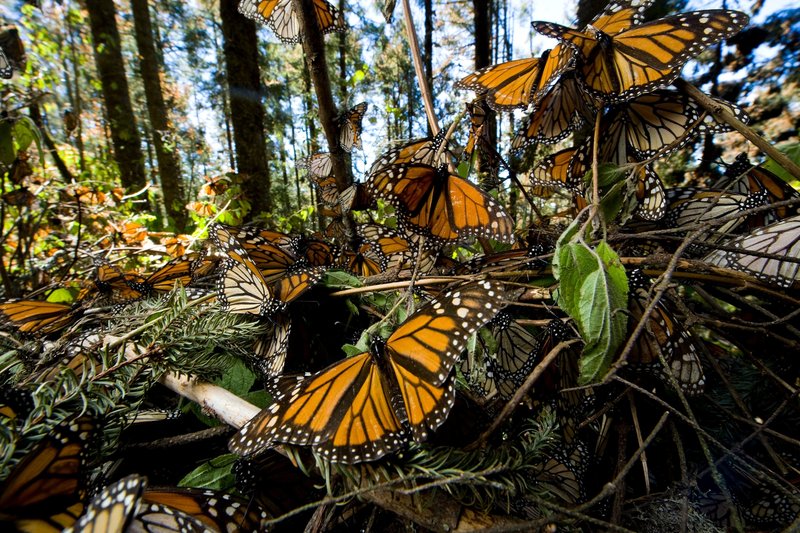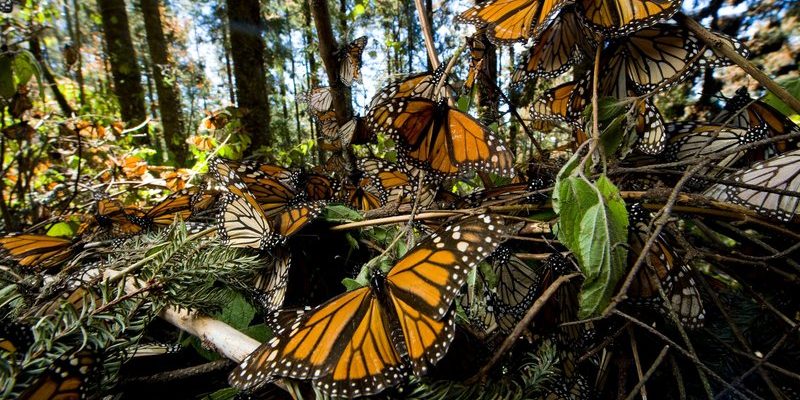
Monarchs are like the canaries in the coal mine for our environment. Their presence tells us a lot about the health of our ecosystems. By understanding their role, we can appreciate the intricate web of life that connects us all. Let’s dive deeper into the world of these amazing butterflies and explore how they contribute to our ecosystems.
Life Cycle of the Monarch Butterfly
To understand the role of the monarch butterfly, it’s essential to know about its life cycle. The journey of a monarch begins as a tiny egg laid on a milkweed plant. This plant is not just a home; it’s a buffet for the caterpillar once it hatches. Isn’t it fascinating that the caterpillar will grow in size, shedding its skin multiple times before entering the chrysalis stage? This process is called metamorphosis—the caterpillar practically transforms into a butterfly.
After spending about 10 days in a chrysalis, the monarch emerges, ready to take flight. This transformation is a vivid reminder of how change can lead to new beginnings. Monarchs migrate thousands of miles from North America to central Mexico, showcasing their incredible ability to adapt and survive. Each stage of their life cycle is interconnected with the plants they rely on, especially milkweed.
Pollination: A Vital Service
You might be wondering how exactly monarchs fit into the bigger picture. One of their main roles is as pollinators. When monarchs visit flowers to sip nectar, they pick up pollen on their bodies and transfer it from plant to plant. This process is crucial for the reproduction of many flowering plants. In fact, around 75% of the world’s flowering plants rely on pollinators like butterflies, bees, and birds for reproduction.
Without these pollinators, many plants would struggle to grow and reproduce. This would impact not only the plants themselves but also the animals and humans that depend on them for food and habitat. So, the next time you see a monarch butterfly fluttering by, remember it’s doing some serious work for the environment.
Monarchs and Their Role in the Food Web
Monarch butterflies do more than just pollinate; they also play a vital part in the food web. As caterpillars, these butterflies are a food source for various predators, including birds and small mammals. Interestingly, monarchs are toxic to many of their would-be predators because they feed on milkweed, which contains toxins. This keeps them safe from some threats, but it also means they’re part of a delicate balance in the ecosystem.
When birds or other animals consume monarchs, it can deter them from eating other butterflies or insects, thus influencing the populations of various species. So, you can see, even though individual monarchs may not seem significant, they contribute to the broader health and stability of their environment.
Habitat and Environmental Indicators
Monarch butterflies require specific habitats to thrive—mainly areas with plenty of milkweed and nectar-producing flowers. As habitats change due to urbanization, agriculture, and climate change, monarch populations face challenges. Monitoring their presence can give scientists insight into the health of ecosystems.
Changes in monarch population levels can indicate issues in the environment, like loss of habitat or pollution. When we notice declining numbers, it can be a red flag that prompts further investigation into environmental health. This means conservation efforts for monarchs often have a ripple effect, benefiting many other species as well.
The Importance of Conservation Efforts
Speaking of conservation, protecting monarch butterflies is critical. Organizations and individuals are working hard to restore milkweed habitats and reduce pesticide use. Planting native flowers and creating butterfly gardens can help bring these stunning creatures back to our environment.
It’s also about raising awareness. Educating others on the importance of monarchs can inspire collective action. If communities come together, they can make a significant impact on local ecosystems. You don’t need a green thumb to help; even small changes can create a more welcoming environment for these butterflies.
Monarch Butterflies and Climate Change
Climate change poses a significant threat to monarch butterflies. As temperatures rise, their migration patterns are affected, along with the blooming times of flowers they depend on. If plants bloom too early or too late, it disrupts the delicate synchrony between monarchs and their food sources.
Adaptation is key here. Monarch populations that can adjust to these changes have a better chance of survival. However, this adaptation is not a guarantee. That’s why understanding the role of monarchs in the ecosystem is crucial. The more we know, the better we can advocate for policies and actions that help combat climate change and protect their habitats.
It’s clear that the monarch butterfly plays a multi-faceted role in our ecosystems. From being essential pollinators to indicators of environmental health, these creatures are like small ambassadors of nature. Protecting them isn’t just about saving a beautiful insect; it’s about preserving the intricate web of life that supports us all.
So, the next time you spot a monarch butterfly, take a moment to appreciate not just its beauty, but also its critical role in our world. By fostering environments where these butterflies can thrive, we’re doing our part to keep ecosystems healthy for generations to come. The monarch butterfly is no ordinary insect; it’s a vital piece of the ecological puzzle, and together we can ensure it remains a vibrant part of our planet’s future.

